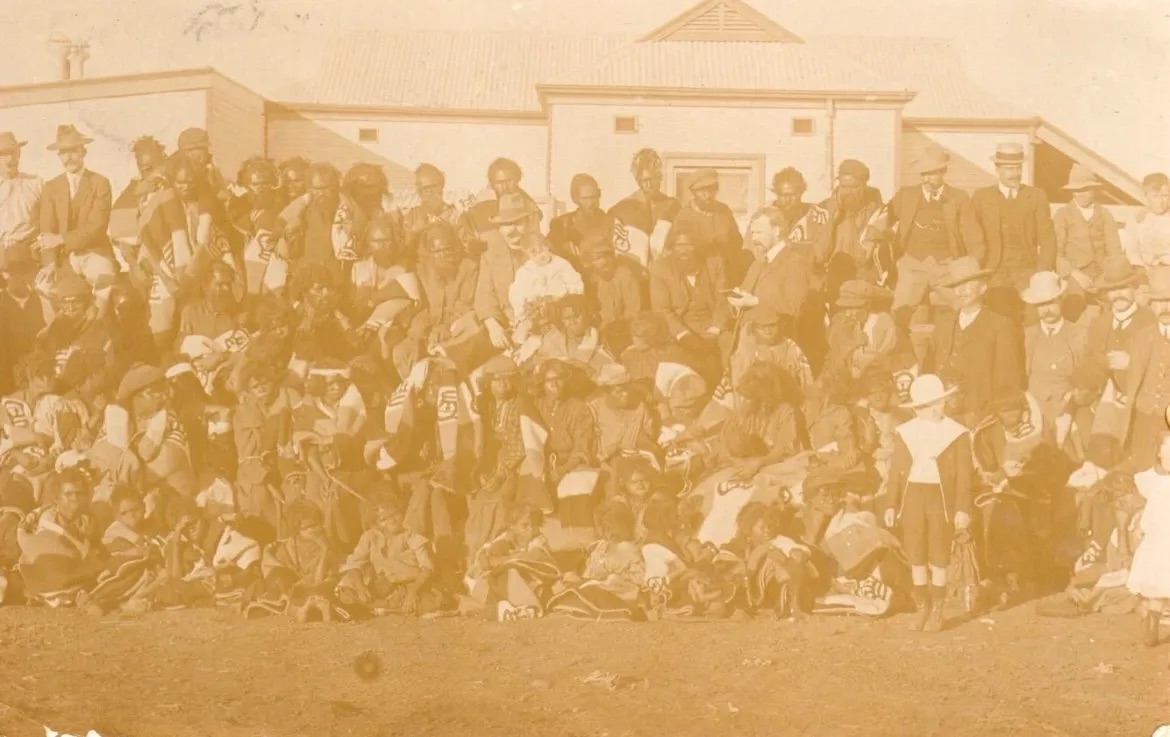
The Self-Care Machine
“Careful, Poppy: THIS makes him lose interest FAST.” An email flashes up on my phone. It’s Matthew Hussey, an Essex-born dating guru whose four-million strong, predominantly female flock I have recently joined. The girl next to me has inevitably seen – it doesn’t matter, because soon ‘Matt’ will be personally attacking her, too. Months later, in Pizza Hut, my companion’s phone screen lights up – it’s him. She solemnly puts down her meat feast. “What pushes your ex away (and how to pull him back).” It’s spreading.
This ominous email is not, however, an exceptional experience for someone who identifies as a woman and who is, inevitably, a consumer. An overlooked consequence of the lack of funding for mental health provisions in the UK and the US is that ‘self-care’ and ‘wellbeing’ industries have sprung up in both countries, with the objective of plastering over this dangerous gap with products and services that supposedly meet the demands of those left behind by the system. The commendable boom in public awareness of mental health issues, which has taken place over the last decade, has coincided with significant cuts to the NHS. These cuts have meant that although more money is allocated each year (with related trusts gaining an income boost of almost 2.5 percent in 2016/17), numbers of specialist nurses have decreased by 13 percent since 2009. Alongside this, the explosion of social media has created a platform for those seeking to capitalise on the need for a sense of wellbeing health services fail to meet. This is where ‘self-care’ enters the stage. It has long been treated a broad term for fix-all solutions – a phrase carefully calculated to embody just the right level of association with empowerment and good mental practice. It has also become the making of entrepreneurs willing to align their videos, their products, and their services with this new ideology – and turn a good buck in the process. Hussey, who has shot to fame in this critical period, has made a career out of it, and many more have followed.
***
The first time I encountered the quiff-sporting life coach, it was by virtue of a questionable Facebook algorithm’s depressing decision that my ‘suggested videos’ ought to feature his viral dating advice. I watched one after the other, fascinated and appalled by the rock-solid gender essentialism of Hussey’s world: the cartoon women in his instructional videos populated two-dimensional bars and coffee shops, variously getting ghosted, fending off saucy texts, and sighing. At first glance, the videos seemed at home among the menagerie of odd media which Facebook sent my way; upon closer inspection, I realised that I had been offered an ideology based on my age and gender, designed to lead me deeper and deeper into his content, and eventually to encourage me to part with my money in exchange for his vision of my better self. As Hussey himself confidently states in a video advert for his programme: “this isn’t about finding myself, this is about creating myself.” I came to see myself configured in data: a young female active on social media channels, a customer waiting to be sold empowerment.
The tone of ‘featured videos’ first encountered by many of his fans is warm, lightly comic; Hussey often issues a coquettish string of jabs at “us men”. In his world, that lynx-doused swarm of cookie-cutter individuals on the other side of a strict gender binary just need to be flattered into treating women well. “Do all the work for him,” Matt beams. “Start a conversation that he thinks he started.” “Ask for a favour.” Hussey’s ‘man’ is an innocuous and uncalculating figure. The simplicity of his formulas for ‘attraction’ must appeal to the women who comment on, follow and ultimately purchase his content. There is a comforting security in the assurances of a clean-cut, successful-looking life coach: the content is a safe place away from the harrowing complexities of modern gender relations. The generation of millennial women Hussey mainly attracts is beset by competing demands to be highly empowered, in control and yet hypersexual, ever-closer to the archetypes of femaleness flooding social media. Being a woman online means being subjected to a flurry of content aimed at fulfilling these seemingly compulsory pressures. Lip fillers, meditation apps, and yes, dating advice, are force-fed to the would-be consumer. Hussey’s brand offers apparent respite from the murky world of monetised empowerment. We should be asking what happens when governmental services leave self-improvement and wellness in the hands of unqualified individuals, who exchange their unmediated messages for money – and lots of it.
***
The image of the ‘life coach’ or ‘relationship guru’ has never been taken seriously by mainstream commentators. Coverage of Hussey’s growing empire, ‘How to Get the Guy’, has long been the comic ‘girl-talk’ section of a magazine show, or a columnist’s low-stakes ‘what I learned’ venture to a coaching session. Hussey himself has undoubtedly profited from his enterprises: he has been an ‘expert’ on the Today Show in the US, he’s written for Cosmopolitan, and he has promotional ties with businesses including Hugo Boss, Proctor & Gamble, and the consultancy firm Accenture. He is followed by more than four million people on Facebook, has accumulated 266 million views on YouTube, and claims to have ‘coached’ over 291 million women. His influence should not be underestimated. He is not the exception, but rather a key example of a much broader trend. Other gurus have cracked the industry alongside Hussey: motivational figures like Jay Shetty and Deepak Chopra are some of the most visible among a sea of influencers whose accounts –- ‘@doingwell’, ‘@thebalancedblonde’ or ‘@recipesforselflove’ – represent a sales pitch for a personal brand of wellbeing.
The lack of serious interrogation of personalities like Hussey is undoubtedly related to the media’s trivialisation of the lives of the demographic he attracts. The women interviewed in advertisements for his retreats and programmes speak of great personal trauma – abusive relationships, deep-seated confidence issues, and a feeling of being ‘left behind’ by a dating culture that does not understand them. The objectives of these women go far beyond securing successful relationships. They seem to want to move past or undo experiences that have shaped them, to find a ‘self’ that might be empowered against a culture that has not brought them happiness or success. These women have been won over by a social media star who promises them both. Rarely are these issues addressed in a public forum: recent articles on Hussey have focused on his expensive and somewhat bizarre ‘retreats’ (in which fans pay £4000 to ‘create themselves’ in a Florida conference hall), his eye-watering individual counselling costs, and the more clickbait-friendly dating suggestions in his arsenal. In a culture derisive of female interventions in ‘self-care’ and preoccupied by the spurned, ditzy thirty-something ‘Bridget Jones’ archetype, where can women look for answers and be taken seriously? In the same way that female fans of mainstream celebrities are ridiculed for the ‘stan’ culture they represent, the women who follow figures like Hussey – women whose personal experiences warrant respectful sympathy as well as, in some cases, the assistance of a health system robust enough to support their anxieties – are left behind. In a culture intent on shaming the singleness and frustrations of the late-twenties woman, it is understandable why empires like Hussey’s spring up: there is simply no alternative available.
The precedents for programmes like ‘How to Get the Guy’ certainly cloy in the cultural consciousness, and his output does little to help. There’s Hussey’s semi-sickly tone (‘if you find me in your junk folder, kindly move me to your inbox … so your email knows we’re friends’). There’s the promotional material showing women nervously whooping in the strip-lighting of a conference hall. There’s his suspicious resemblance to Ryan Gosling in a ‘Daz’ advert. Diving deeper into Hussey’s philosophy, I discovered much more than these factors at play. At its heart lies a rigidly gendered assumption about ‘what women want’ and ‘what men want’ – phrases that crop up everywhere in his output. Hussey’s audience is forever encouraged to see their actions through the eyes of the men they aim to attract: every text, every speech, is calculated to achieve specific results in a potential partner. Not only does this assume that all women are heterosexual and looking for a male partner who also wants the same thing, but it encourages women to see themselves through the lens of male validation, or, as the French feminist philosopher Luce Irigaray put it, to become: “a more or less obliging prop for the enactment of man’s fantasies”. Irigaray, writing specifically about the female sexual self-image being geared towards male pleasure, concludes that this approach “leaves her in a familiar state of dependency upon men.” One wonders whether the same thing is replicated here, in the slow-dance of tactical seduction: Hussey’s followers are indeed encouraged to increase their ‘value’ (a term which should raise eyebrows) by pandering to an imagined desire in their object of affection. By dismissing such programmes designed for women and excluding them from broader cultural commentary, commentators are leaving those in need of assurance and self-esteem vulnerable to problematic ideologies. The consequences of dismissing the ideologies behind such programmes are as yet unknown, and they ought to be scrutinised.
***
Hussey charges £10,000 for a one-on-one coaching session, and most of his internet programmes have complicated payment requirements which can amount to considerable monthly fees. One woman, who reviews her experience of the Florida retreat in a promotional video, recalls that a friend asked her if she’d “checked out this guy called Matthew,” and instantly she “got a bottle of wine and a box of chocolates … and bought all the online programmes. All weekend I did nothing else.” Whether or not his methods and mentality are helpful, the sales rubric of his business seems to be centred on revenue rather than the wellbeing of the women he sees. Once you’ve trawled through his videos and free guides, each of which leads you to card purchases in the form of tailored packages and links to exclusive content, you are encouraged to enter the payment-led program of ever-mounting costs. Each with tailored packages, links to exclusive content, and more contact with the man himself. With such straightforward testimonials as “I didn’t love myself and now I do” (offered by one woman on a retreat), and promises along the lines of “our easy-to-follow dating programmes will get you exactly what you want” it is evident that Hussey’s silver bullet holds appeal.
What we need is a greater cultural investment in, and wariness of, the welfare of those who seek out programmes like his. Beyond the gateway delight of copying-and-pasting his confected text chat-up lines (on 9texts.com you’ll find gems such as “it’s a good thing we’re colleagues/live far apart/just friends… you and I would be trouble”), women are encouraged to rely on Hussey and his team to entirely transform their confidence and sense of empowerment, in a world where every woman’s most deep desires are a) a man and b) for him to commit. Rather than letting programmes like these to fly under the radar of cultural criticism, added to the vault of ‘women’s things’ that exist only in the mainstream as lighthearted tidbits, commentators should interrogate the gendered nature of these widely-consumed programmes, and ask why societal apparatuses have left those who endorse them behind.
***
We have to be wary when examining how the culture of ‘self-care’ and female-centred empowerment has become commodified by emerging markets. ‘Self-help’ – a term that sprang to life in the 1980’s and blossomed into a wildly successful publishing opportunity – has transmuted into what we’re seeing today. It would pay to be suspicious of the extent to which millennial thirst for self-care is being met by indifferent, and sometimes questionable, corporations. The industry is worth $11 billion in the US alone, and has seen key waves of wellness-based trends, carefully monitored by marketing executives among the biggest businesses. While individual products may be effective in improving a sense of wellbeing, as consumers we would do well to remember that conglomerates succeed by jumping on bandwagons, co-opting movements. For example, ‘Adult colouring books’, a craze that exploded in 2015 to the delight of publishing houses, quickly became a market dominated by Amazon, who swept up the profits in the following year.
All facets of the lifestyle market – from beauty to fitness, have seen companies diversifying their products to align with the thirst for ‘self-care’. A quick tour of the products featured in wellness-geared editorials and on Amazon suggests that the link between the product and its glossy ideology can be tenuous at best. The ‘Bellabeat Leaf Urban Health Tracker’, retailing at $124, interprets well-being as an exhaustive compilation of bodily data in a ‘gorgeous’ leaf jewellery design. Amazon peddles unsuspecting women nose hair trimmers, charcoal teeth-whitening powder, and a ‘tutti frutti shower jelly gift set’, all under the promise of ‘self-care’. Perhaps most bleakly, Lululemon (whose reputation was recently tarred by a Guardian article revealing horrific abuses of workers in one of its factories) broke into the market earlier this year with a ‘Self Care line’; the consumer review website Retail Dive consulted the head of A.T. Kearney’s beauty division, Patricia Hong, for her analysis. Hong cites Lululemon’s desire to “expand into new categories” and “leverage existing distribution channels.” One might wonder whether the term ‘self-care’ has been cynically tacked on to the range in order to enact this smart business move: the beauty line is simply advertised as “designed to solve sweaty problems and to get you quickly from sweaty to ready.” At a hefty $48 for 48ml of face moisturiser, it had better work. The NHS soberly defines “self-care” as “keeping fit and healthy, understanding when you can look after yourself, when a pharmacist can help, and when to get advice from your GP.” Wariness over the pushing of bogus products with hiked-up prices would be wise.
In a climate of longer working hours, ever-present technology, and substantial gender-based social pressures, a push towards self-improvement and mental wellbeing is positive. Yet we should begin to see the industry of ‘self-care’ for what it often is: corporations trying to monetise the frustrations of women. Although Hussey’s area of ‘expertise’ is centred on women’s relationships, his content thrives on the taglines and the empowerment aesthetic responsible for the boom of the broader market. Selling a personal brand is a baffling act of our baffling times; the ‘influencer’ must be understood as a novel commercial tool. We should be asking why our suspicion of consumerism rarely extends to issues which deal with normative gendering, which trade in essentialism and assumption.
After a long, and at times, disturbing journey with the soul of the man from Essex with the key to my heteronormative happiness, I found myself situating my own experiences within his confected syllabus in a way that I hadn’t before. Maybe men aren’t accountable for their clumsy navigation of relationships; maybe my ‘roadmap for success’ had been upside down the entire time. A momentary hesitation, though. After months of messages from mystical ‘Matt xx’ I finally plop him into the junk folder, so my email knows we’re not friends.∎
Words by Poppy Sowerby. Art by Oliver Nixon.







